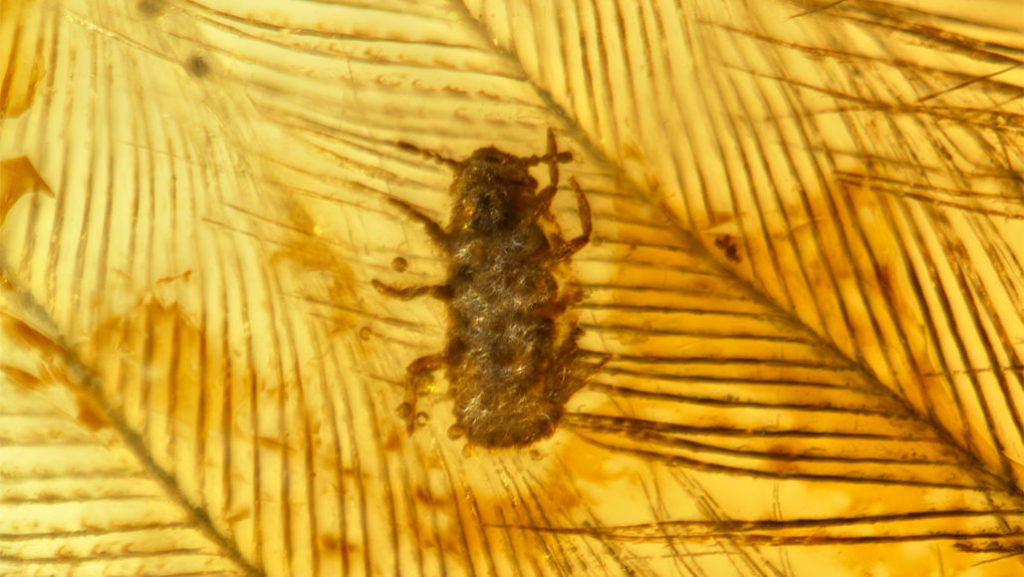@WFS,World Fossil Society,Riffin T Sajeev,Russel T Sajeev
 A newly discovered ancient insect species, called Mesophthirus engeli, appears to have used strong mouthparts to chew on feathers. Claws and bristles on its legs would also have helped the insect climb or cling onto hosts’ feathers.T. GAO
A newly discovered ancient insect species, called Mesophthirus engeli, appears to have used strong mouthparts to chew on feathers. Claws and bristles on its legs would also have helped the insect climb or cling onto hosts’ feathers.T. GAOFeathered dinosaurs, including early birds, may have dealt with pests similar to lice around 100 million years ago.
A newfound ancient insect species, dubbed Mesophthirus engeli, was found preserved with dinosaur feathers in two pieces of Myanmar amber dating to the mid-Cretaceous Period (SN: 7/24/14).
The fossils are the earliest evidence found of insects feeding on feathers, researchers report December 10 in Nature Communications. The previous record-holder was a fossilized louse from roughly 44 million years ago, says Taiping Gao, a paleoentomologist from Capital Normal University in Beijing.
M. engeli looks somewhat like modern lice, with teeth and a thick, wingless body. The insects also have anatomical traits seen in other ectoparasites — those that live outside of their host’s body. In one piece of amber that Gao and colleagues analyzed under a microscope, the team found nine insects on or near a feather. That feather had damage holes toward its end, but not near its base — a pattern that also occurs when lice chomp on modern birds’ feathers.
Modern birds replace old or damaged feathers through molting, says Luis Chiappe, a paleontologist at the Natural History Museum of Los Angeles County who specializes in birds. The new findings show that parasite–host relationships that could’ve damaged feathers began at least 100 million years ago, he says, and could be one reason why birds evolved to molt.
@WFS,World Fossil Society,Riffin T Sajeev,Russel T Sajeev
Source: Article By Sofie Bates, Science news



 February 21st, 2020
February 21st, 2020  Riffin
Riffin  Posted in
Posted in  Tags:
Tags: 